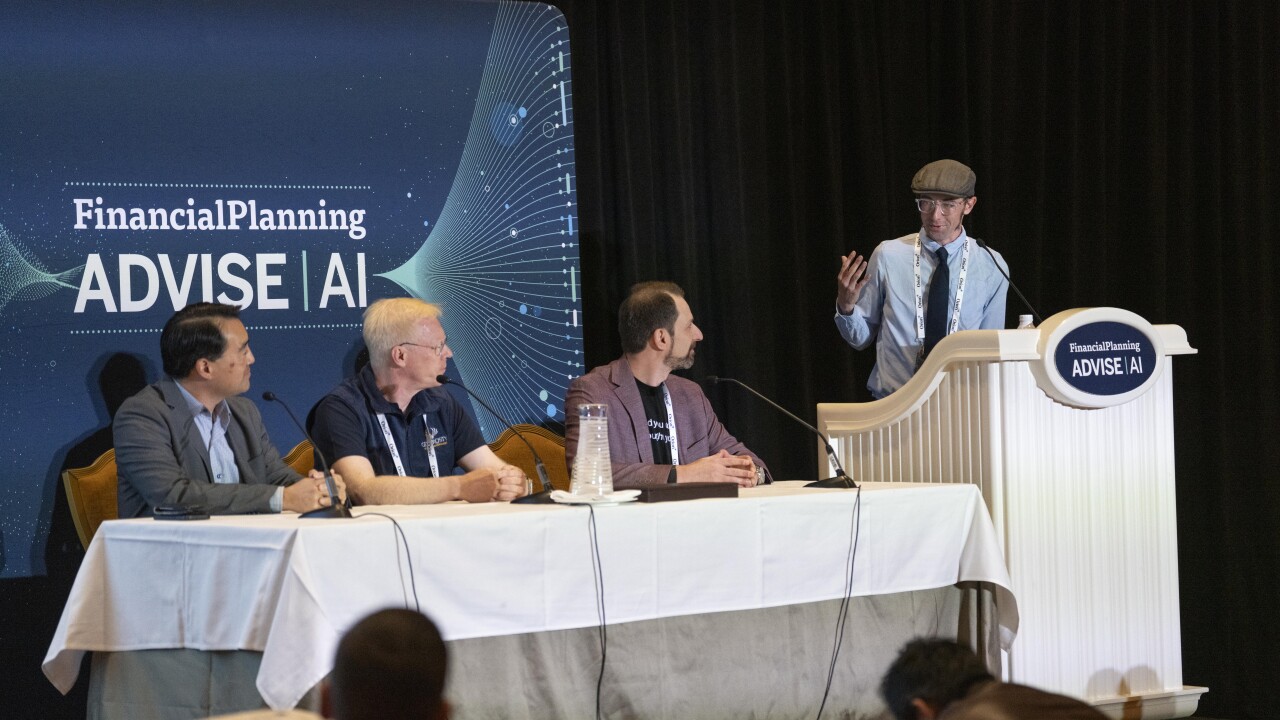As the financial services industry moves toward meeting several Securities and Exchange Commission deadlines that loom, technology and software companies are beginning to come forward with solutions that may help fund companies reach those goals.
Two such companies, Eagle Investments of Boston, and Encompys, of New York, are touting their new software releases as products than help fund companies meet SEC regulatory requirements - namely the 2004 deadline for companies settling trades within a day, and an October deadline for reporting after-tax returns.
The SEC will require some funds to report after-tax earnings in October of this year, said Chris Wloszczyna of the Investment Company Institute of Washington, D.C. Those companies that have already issued prospectuses for 2001 are required to include the new after-tax data in them by February of 2002. The idea is to provide investors with more information so they can make informed decisions, Wloszczyna said.
A formula for computing the after-tax returns will be provided by the SEC, according to Wloszczyna. However, the process could be difficult because fund managers have historically used spreadsheets to track data, and meeting the SEC requirement will mean delving into a tangle of old data from past years, said Bruce Feibel, director of performance measurement technology at Eagle.
This summer, Eagle will release a revised software product that calculates after-tax returns. The product, called Eagle PACE for Mutual Fund Performance, is the result of several fund companies approaching Eagle while trying to solve the problem of efficiently calculating the after-tax returns, said Feibel. Providing a fund's after-tax returns was simply a matter of adding capabilities to Eagle's already-existing software.
"We only had to enhance it to cover some different requirements for mutual funds," he said.
It works like this: A database, accessed through the Internet, stores information regarding investment portfolios. Fund managers and accountants can then use the software to calculate returns and other data based on various formulas.
The software is currently being tested at a couple of fund companies and will be available at the end of June. Feibel declined to say which companies are using the software.
Because software developers such as Eagle often offer a range of services that can be packaged and sold as customized solutions, cost for these products often vary widely, said John Lehner, senior vice president of sales and marketing at Eagle. For the Eagle Pace product, the cost may range from $10,000 to $100,000, Lehner said.
The only competition the company faces in this niche of the market is Microsoft Excel, Lehner said. He laughed in mentioning Microsoft, because its spreadsheet software requires accountants to manually process fund data. That means no other companies have yet offered software that automates the process of calculating after-tax returns, he said.
But David Bachert, a spokesperson for AIM Investments of Houston, said fund accountants at AIM are currently in negotiations with another company, Confluence Technologies of Pittsburgh, to provide software similar to Eagle's. He did not know what the negotiations entailed or when AIM might be using the product. AIM already uses a Confluence product called FundStation which stores fund data and calculates returns, Bachert said.
Another SEC deadline, when fund companies must begin settling their trades the day after they are filed - known as T+1 - may be years away, but it will require a vast change in how the industry operates. It also requires that companies adopt new technology, said another software company executive.
The financial industry, which currently settles trades within three days after they are filed, will probably spend close to $8 billion on upgrading its infrastructure to T+1 capabilities, said Michael Lane, chief marketing officer at Ecompys of New York, a software company that says it can help.
Encompys (pronounced "in-compass") sees a gold mine in those numbers and has developed computer systems it says will move companies at least a step closer to a shorter trade-settlement time.
Encompys software integrates a number of the day-to-day functions of the fund industry, such as back-office tasks, into one package, Lane said. He said that allows fund managers to communicate with trade-settlement hubs more efficiently and frees up managers' time to deal with customer relations. And, because the software integrates many functions, it streamlines the trade process and gets companies closer to next-day trade settlement, Lane said.
Cost for the product varies and is calculated on a per-user basis, Lane said. He declined to disclose a price range.
But Lane said it may be difficult to get companies to spend money for the product. Companies have already spent money on software upgrades to thwart the Y2K glitch that all industries faced at the end of 1999 and spending yet more on technology is not likely to be an attractive proposition, he said.
But unlike for Y2K, spending for developing T+1 capabilities will, without question, save the industry billions of dollars and will eventually provide a healthy return on the investment, Lane said. Forecasts show the industry saving so much on operating costs after software upgrades, that fund companies should break even on the $8 billion estimated investment within four years, he said.





